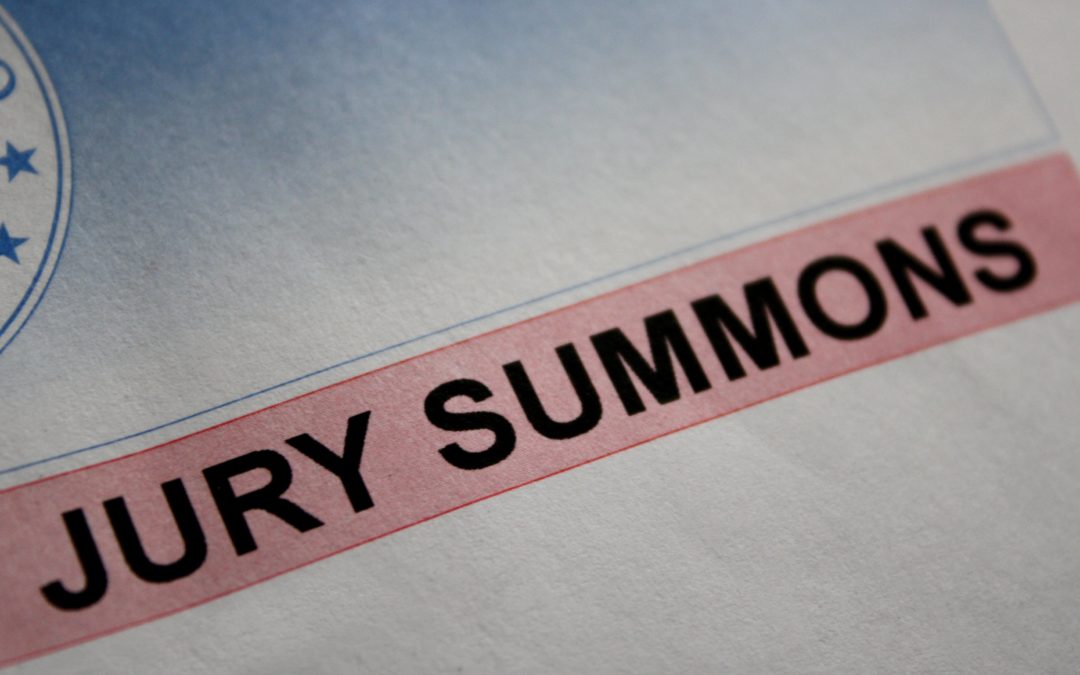The Sixth Amendment of the Constitution guarantees the right to a trial by jury in criminal cases. Juries, then, are selected in a process known as “voir dire,” in which a group of both judges and attorneys determine a prospective juror’s competence and suitability for the case. It’s also important to note that errors made during the jury selection process can be appealed in a criminal case. It is often said that a case can be won or lost in jury selection, which just means that it is a very important process and who sits on your jury does matter.
To serve as a juror, a person must be 18 years or older, a U.S. citizen, have the right to vote, and live within the court’s jurisdiction. They must also be able to comprehend the trial testimony and physically sit for the duration of the trial. Anyone who fails to meet this criteria will be disqualified “for cause,” which we’ll get into later.
How Voir Dire Works
When a case is first called to trial, a panel of prospective jurors appear before the trial judge in the courtroom. The judge will start the voir dire process by determining whether the jurors are legally qualified to serve on the jury (pursuant to the standards mentioned above). They’ll also conclude whether jury duty would “cause undue hardship” for the juror due to the prospective juror’s personal or professional commitments. It is important to note that an ‘undue hardship’ is not an inability to serve because you have to report for work (any employer who penalizes you for serving would be subject to legal ramifications); it is, for example, an inability to serve because you are the sole care-taker to a disabled minor or parent who requires 24/7 care, and there are no other available caretakers. “Live” trials are currently not happening due to COVID-19. Courts are working hard to determine how to conduct trials, while keeping everyone’s health and safety a priority. It is unknown, at this time, how or if the pandemic will affect jurors’ ability to serve in the future.
Once the Court has reviewed the questionnaires that each juror has filled out and reviewed some preliminary matters with the venire, both the prosecuting and defense attorneys will get an opportunity to ask questions of the jurors, so they may get a better idea of their backgrounds and determine if there’s any conflict of interest. It can be a fine line to walk when questioning potential jurors because it is important to draw out any biases they have and figure out which jurors will be best for your type of case, However, there are certain questions and topics that attorneys are not permitted to get into with prospective jurors, and some judges in Federal Court do not allow attorneys to conduct any voir dire on their own. These judges may allow written questions to be submitted, in advance, for the Court to ask, or they may just conduct their own questioning.
Thinning the Herd
After the attorneys’ inquiries, they begin narrowing the list of potential jurors from the panel by making “challenges for cause” and “peremptory challenges.”
When voir dire shows that a juror is unqualified, unable, or unfit to serve on the case in question, a challenge for cause will be made. Lawyers can make an unlimited number of these “for cause” challenges. They’ll also dismiss anyone who can’t impartially apply the law or set their own feelings aside. An example would be a juror stating that they need to hear from the defendant despite the Judge explaining that every defendant has a Constitutional right to remain silent.
As for peremptory challenges, lawyers can use this to excuse jurors without any reason. This allows attorneys to dismiss jurors who would likely favor one side over the other in the case. However, a lawyer cannot use a peremptory challenge to dismiss a juror because of their class or race. Unlike challenges for cause, there’s only a limited number of peremptory challenges, and the allotted amount varies from state to state and according to the nature of the case (e.g., misdemeanor vs. felony, etc.).
The Final Step
The last step in the jury selection process is known as “striking the jury.” Here, the prosecution and defense argue their challenges for cause; challenges that are granted will “strike” the juror from the panel. Once no more challenges for cause are left, they’ll move onto peremptory challenges, which can be written or orally submitted.
After these challenges are completed, the judge will place the remaining jurors in the jury box, and with that, the jury has been selected.
Puglisi Law’s team of dynamic, compassionate criminal defense attorneys knows how deeply the defense’s case can influence a jury’s verdict. This is why they strive to provide their clients in Miami-Dade County with the most prudent and hard-hitting representation in court, because they want to see them to justice. To learn more about how Puglisi Law can help you with your case, give us a call at 305-403-8063.



